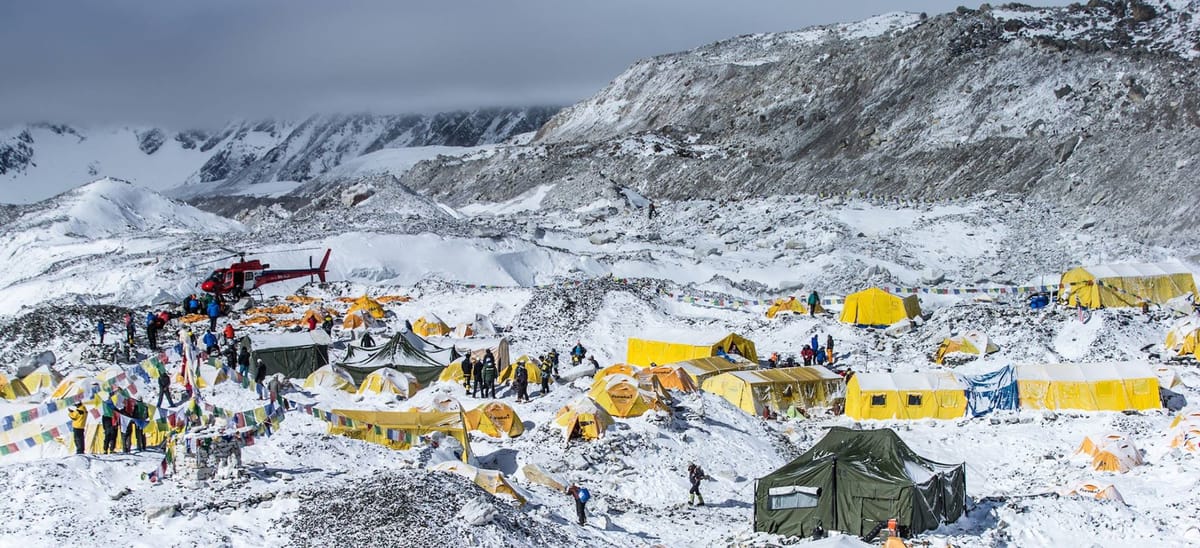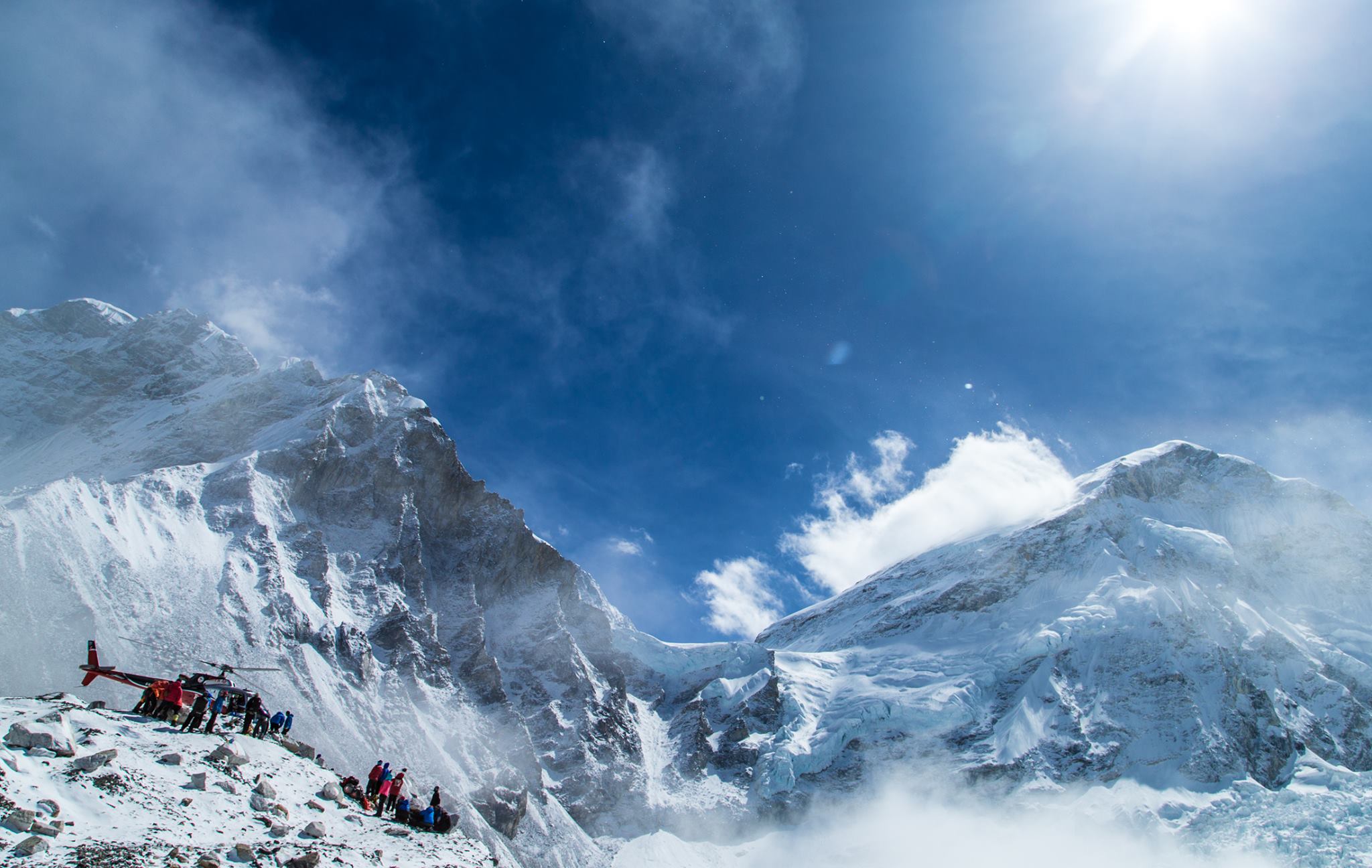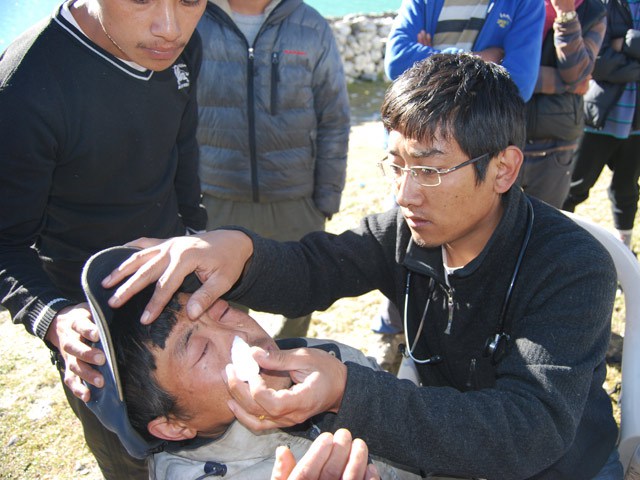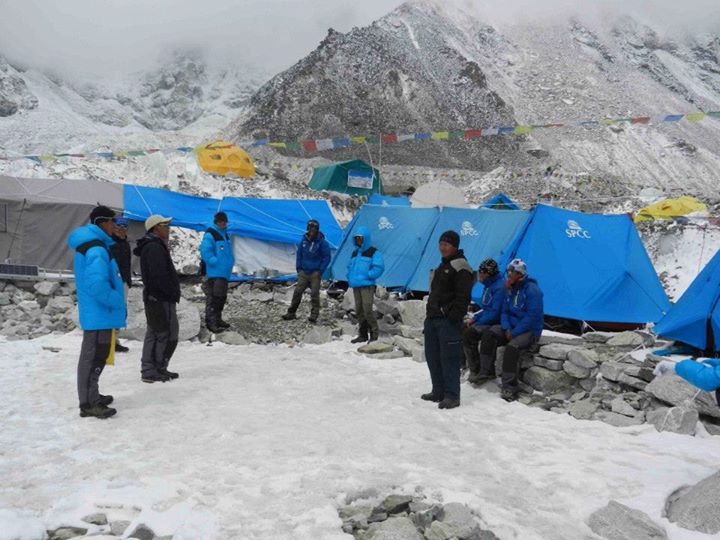Quake update: Icefall Doctors not optimistic about resetting route up Everest

Nepal government says Icefall Doctors have assessed the traditional climbing route on Everest and are unsure of the 2015 climbing season. A final decision will be taken in a day or two.
A week into the deadliest avalanche on Everest that was triggered by a massive earthquake, the fate of the 2015 climbing season seems uncertain with the route setting Sherpas hesitant about the traditional path leading to the summit.
As many as 19 people, including climbers and Sherpas, were killed and 61 injured at Everest Base Camp (EBC) when the mega quake struck Nepal around noon local time. The quake caused massive avalanches from peaks adjoining the world's highest mountain.

"The Sagarmatha Pollution Control Board (SPCC) sent six Icefall Doctors, Sherpas with the ability to set the route all the way to summit Everest, to inspect the traditional climbing route for damages. They reported extensive damage to the Khumbu Icefall area and huge deposits of snow all over the route that has covered several crevasses. They are not optimistic about it ( climbing this season)," Tulsi Prasad Gautam, mountaineering chief, Ministry of Tourism, Nepal, told The Outdoor Journal from Kathmandu.
The Icefall Doctors were given additional rope and ladders when they went for a reconnaissance of the climbing route. They operate under the jurisdiction of the SPCC. They would give the final report in a day or two about their decision on the fate of the 2015 climbing season after consultation with the Expedition Operator's Association (EOA). The senior government official said to The Outdoor Journal.
The Nepal government has been receiving flak from mountaineers for its "slow" response in arranging helicopter-aided search and rescue to the mountains, especially Mt. Everest, given the presence of hundreds of mountaineers.
Dr Nima Namgyal Sherpa, the only doctor among the Sherpa community, who is the Everest Base Camp manager for Kathmandu-based Asian Trekking, criticized the response time of the Nepal government as well as the absence of liaison officers as promised by authorities following the 2014 avalanche on the world's highest peak.

"The emergency response time of the Nepal government was not good. Not only were they slow in every aspect of search and rescue, the liaison officers who were supposed to be present at the EBC were not to be found anywhere after the avalanche," said Dr Nima enroute to Lukla, a small town in the Khumbu region which is the gateway to EBC from the Nepal side.
Dr Nima, an avalanche survivor, says the first private chopper arrived 24 hours after the avalanche struck EBC, "I salute the pilot who made it to us in horrible weather."
Denying the charge, the senior government official said, "This is not true. I was responsible and was handling the chopper rescue services. Immediately, I sent a helicopter to camp 1 and camp 2 on Everest (a chopper can only carry two persons) and airlifted injured or stranded people and dropped them to EBC."
He claimed that there were five tents comprising Liaison Officers at EBC at the time of the avalanche. "In fact, one of their tents were swept away along with another of the SPCC. At that time, the government asked the LO's to return to Lukla (nearest airstrip to EBC)," Tulsi said.

Dr Nima said the majority of deaths at EBC were due to severe head injuries and multiple trauma caused by the incident.
"There were deep cuts to the head, fractures, bruises and multiple trauma that the people suffered from. There were five doctors in all at EBC and each one of us had more number of patients than we've ever handled. We did fall short of supply as no one was prepared for such an incident. I'd say if the five doctors were not there at EBC, the death toll would have been much higher," says Dr Nima, a multi-peak summiteer, including Everest
On Everest, the April 25 quake caused hanging glaciers to fracture and release. Mountaineers present at the location said the quake had resulted in avalanches on all the mountains around them.
The most significant of these fell from a hanging glacier on the northern shoulder of Pumori (23,494ft), a prominent peak on the west side of Everest, in close proximity to EBC. The upper portion of Base Camp was blanketed by debris, with rocks and ice tearing through tents.
When asked if there was any sense in continuation of the present climbing season, Dr Nima said the damage to the traditional route could be far more than imagined and that it did not make much sense in allowing Sherpas or climbers to continue with small avalanches being reported almost every day.
(Editorial inputs by Yogesh Kumar)
Images © SPCC & 6summitschallenge.com





Comments ()